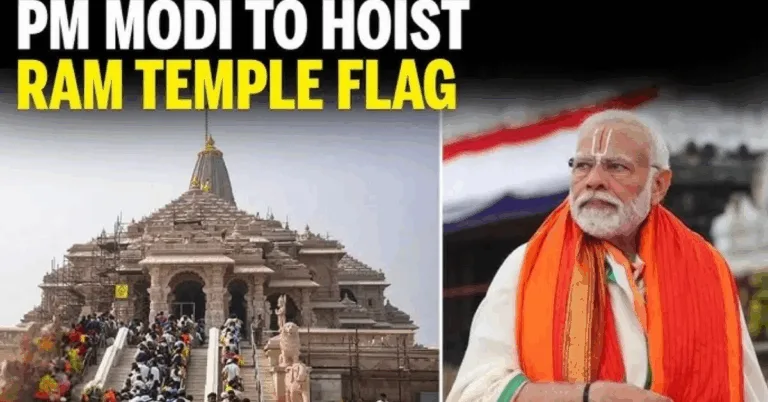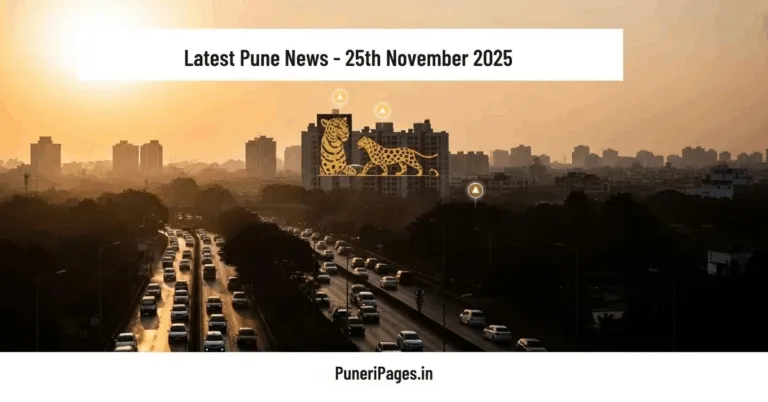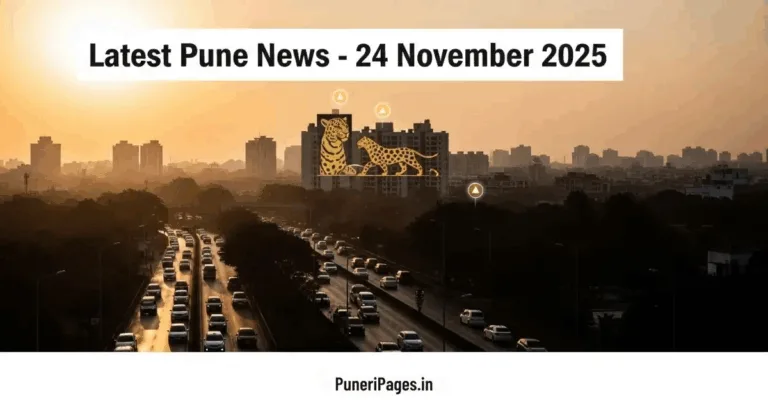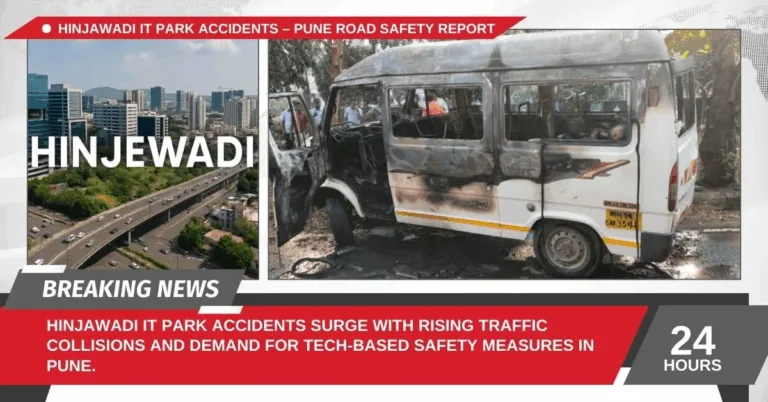
Table of Contents
The Sant Dnyaneshwar Maharaj and Sant Tukaram Maharaj Palkhi processions are an extraordinary spectacle of devotion, discipline, and cultural harmony. With a legacy stretching back over 700 years, these processions are a moving temple—embodying spiritual unity, equality, and community service. Every year, lakhs of Warkaris from across Maharashtra walk together on foot to Pandharpur, chanting abhangs and creating an unparalleled spiritual atmosphere. For those planning to witness this event, this guide provides everything you need for a meaningful and respectful experience.
🚦 Traffic, Timing & Route
Expect major traffic diversions and road closures. Main roads may be blocked for hours to ensure smooth passage for Warkaris. To stay updated:
- 📍 Refer to Pune Police’s live Palkhi Tracking Portal: https://diversion.punepolice.gov.in/palkhi/track
- 🕗 Plan to arrive early and stay patient through long halts
- 🚌 Use public transport or parking points recommended by police
The portal shows live GPS location, traffic diversions, and halt points. This is crucial for both attendees and commuters to avoid inconvenience.
👟 Dress Smart & Pack Light
Comfort is key. Dress in breathable fabrics and walking shoes. Carry:
- 🎒 Light backpack with water, ORS, and snacks
- 🧢 Cap or scarf and sunglasses
- 🔋 Power bank, phone, and ID proof
- ♻️ Avoid plastics and dispose of waste responsibly
Long walks and exposure to sun/rain demand preparation, especially if you’re with children or elderly family members.
🛑 Safety Tips & Crowd Etiquette
Safety should never be compromised:
- 🧒 Keep children supervised at all times
- 🚧 Follow police instructions and remain outside the Palkhi route
- 🧍♂️ Avoid loud behavior, honking, or music that disrupts the spiritual ambiance
- ❤️ Respect women, sadhus, and older Warkaris — do not obstruct or photograph them without consent
- 💉 Know where first-aid and medical booths are located
📸 Photography with Respect
While documenting the experience is encouraged, it must be done with cultural sensitivity:
- 🎥 Use wide-angle shots instead of close-ups
- 💡 Refrain from using flash during prayers or kirtans
- 🚫 No drone footage unless officially authorized
Capture the essence, not just the image. Best moments include early morning abhangs, padayatra energy, and aarti during halts.
🛐 Embrace the Spirit of Bhakti
Wari is a living embodiment of devotion, where simplicity reigns supreme. It’s not just a visual treat but a chance for inner reflection. You can:
- 🎶 Join in bhajans or dindis for short stretches
- 🍎 Share water or fruit with Warkaris (only if welcomed)
- 🧘♂️ Meditate silently and observe the devotion
Let the devotion and chants open your heart—no one returns untouched by the Wari’s divinity.
✅ Quick Checklist Before You Leave
- ☑ Water Bottle & ORS Sachets
- ☑ Sunscreen & Scarf
- ☑ Fully Charged Phone + Power Bank
- ☑ First-Aid Kit (for families with kids/elders)
- ☑ ID Proof and Emergency Contacts
- ☑ Patience, Respect, and a Smile 🙏
🎭 Cultural Programs & Community Participation
Several halts en route host cultural evenings featuring:
- Folk dances like Lezim, Dindi Nritya
- Bhajan-Kirtan mandals
- Historical plays and storytelling around saints
These aren’t just entertainment but spiritually enriching events. Check the day-wise halt schedule for program venues.
🧾 Wari Glossary for First-Time Viewers
Here are some terms you’ll encounter:
- Dindi: Group of Warkaris walking together
- Abhang: Devotional song
- Warkari: Devotee participating in the Wari
- Tukaram Gatha / Dnyaneshwari: Key spiritual texts
- Bhajan / Kirtan: Group devotional singing
🗓️ Palkhi Calendar & Important Halts
Here’s how the journey flows:
- Starts: Sant Tukaram Palkhi from Dehu; Sant Dnyaneshwar Palkhi from Alandi
- Crosses: Pune, Saswad, Baramati, Malshiras, and more
- Ends: Pandharpur on Ashadhi Ekadashi (July 17, 2025)
Each day has a distinct flavor and energy. Full PDF schedule available at Pune Police Portal
💬 Quotes from Devotees & Volunteers
“Every step I take in the Wari is like a prayer. Even the pain becomes divine.” – Arun Warkari, Nashik
“We’ve served lemon water and poha at our camp for 12 years now. It’s our seva to Vitthal.” – Anjali Tai, volunteer from Baramati
Such personal stories elevate the significance of the Palkhi far beyond what can be captured visually.
🤝 Volunteering & Donation Info
You too can be part of the Wari without walking:
- Partner with NGOs offering free food, medical help
- Donate umbrellas, footwear, water pouches
- Volunteer to clean routes or help elderly Warkaris
Some trusted organizations:
- Seva Sahyog Foundation
- Maharashtra Bhakti Marg Mandal
- PMC-registered volunteer camps
🧭 Alternate Viewing Spots
If you’re worried about crowds, try these locations:
- Hadapsar Bypass: Less crowded, clear visuals
- Saswad Ghat area: Scenic & culturally vibrant
- Taradgaon halt: Spiritual atmosphere with plenty of space
Ask locals or check real-time updates to position yourself smartly.
🧘♀️ A Guide for Foreign Visitors
If you’re visiting from outside Maharashtra or India:
- Learn a few Marathi phrases for greetings and thanks
- Dress modestly and respect local customs
- Join in padayatra for a short stretch
Bring back not just photos, but lessons in simplicity and spirituality.
🗺️ Live Tools & Resources
- 📍 Live GPS Tracking: https://diversion.punepolice.gov.in/palkhi/track
- 🗺️ Route PDF Download: Route Map
- 📷 Daily reels & posts: Instagram.com/PuneriPages
- 🔔 Join Alerts: Telegram & WhatsApp group links on our homepage
📖 Historical Significance
Sant Tukaram and Sant Dnyaneshwar spearheaded the Bhakti movement in Maharashtra. Their teachings promoted equality, simplicity, and devotion above ritual. The Wari represents a pilgrimage of the soul—a reminder that humility is the highest virtue.
The Palkhi started over 300 years ago when descendants of Sant Tukaram began carrying his paduka (footprints) to Pandharpur. Since then, it has grown into one of the world’s largest and most disciplined spiritual gatherings.
🌐 Final Words
Watching the Palkhi isn’t just an event—it’s an awakening. As drums beat and feet move in rhythm, you’re witnessing history, faith, and humanity in action.
📌 Stay tuned to PuneriPages.in for real-time Palkhi visuals, alerts, route updates, stories, and interviews.
FAQs: Watching the Palkhi in Pune
1. What is the Palkhi procession?
The Palkhi is an annual spiritual procession where devotees (Warkaris) carry the padukas (footprints) of Sant Dnyaneshwar and Sant Tukaram from Alandi and Dehu to Pandharpur on foot.
2. When does the Palkhi happen in 2025?
In 2025, the Sant Tukaram Maharaj Palkhi departs on June 18 and Sant Dnyaneshwar Maharaj Palkhi on June 19, with both converging towards Pandharpur for Ashadhi Ekadashi on July 17.
3. How can I track the live location of the Palkhi?
You can track the real-time location using Pune Police’s portal: https://diversion.punepolice.gov.in/palkhi/track
4. Is it safe to bring children or elderly people?
Yes, but it’s advisable to choose less crowded viewing spots and come prepared with water, snacks, and sun protection.
5. What should I wear or bring along?
Light, breathable clothes, walking shoes, cap, sunscreen, water bottle, light snacks, ID proof, and a phone power bank.
6. Are there any traffic restrictions during the Palkhi?
Yes, many main roads are closed or rerouted. Always check real-time updates on the Pune Police traffic portal.
7. Can I join the Warkaris and walk along?
You can walk a small stretch respectfully. Do not interfere with the dindis and follow directions from authorities.
8. Is photography allowed?
Yes, but be respectful. Avoid using flash and do not photograph people up close without consent.
9. Are there medical facilities available on the route?
Yes, local authorities and NGOs set up first-aid and hydration booths at intervals.
10. What cultural events take place during the Palkhi?
Traditional performances like bhajans, lezim dances, and plays happen during halts—especially in Pune and Saswad.
11. Can foreigners attend the event?
Yes! It’s a wonderful opportunity to experience local spirituality. Dress modestly and respect customs.
12. How do I volunteer or donate?
Many NGOs and local groups accept donations of food, water, or volunteer time. Check websites like Seva Sahyog.
13. Are there official groups to get updates?
Yes. Join PuneriPages.in or relevant WhatsApp and Telegram groups for alerts and photos.
14. What’s the historical significance of the Palkhi?
The Wari tradition dates back over 700 years, celebrating equality, devotion, and the Bhakti movement of saints.
15. Where are the best places to watch the Palkhi?
Less-crowded spots include Hadapsar Bypass, Saswad Ghat, and Taradgaon. Arrive early for a good view.
🕊️ Jai Hari Vitthal Jai Dnyanoba Tukaram! 🕊️






